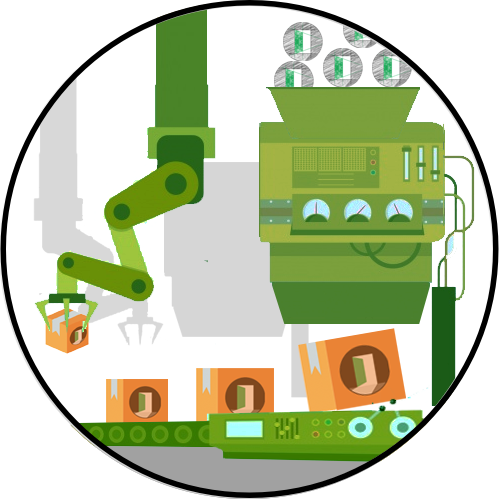OpenPBL for small groups

A learning methodology is described from its implementation dynamics, while what has been presented so far has been reduced to the preparations for this implementation with the specification of the variables involved.
The example context
In order to exemplify the use of OpenPBL in this dynamic in the context of a small group of students, I created an activity that involves a real problem in the city where I live as I write this text. I currently live in Florianópolis, Brazil, a city with many natural beauties, but which suffers from a chronic traffic jam problem. The reasons for this problem are many, among them: high rate of permissible vehicles, strong tourism industry, lack of urban planning, in addition to the limited number of bridges connecting the island to the mainland, making it difficult to commute, as shown below.
Traffic between Florianópolis and the surrounding cities is intense in the early morning and late afternoon. It becomes critical as you approach the bridges, which only offer 10 lanes in all. The effect is felt even by those who do not need to cross the bridges, multiplying travel time due to the effect generated by traffic jams.
Below I present the complete text of the OpenPBL activity which uses the context above presented. An analysis of details that appear in the description of the activity is presented shortly afterwards, including an explanation of what apparently was a typing error in the text below. I recommend following the sequence, reading the description below and continuing later with your analysis. At the end, it is presented the application dynamics of the activity.
ACTIVITY DESCRIPTION FOR THE STUDENTS
Florianópolis, capital of the state of Santa Catarina (Brazil), is a city with around 550 thousand inhabitants, but polarizes a metropolitan region composed of ten other cities, totaling more than 1.3 million inhabitants. Many of the residents of cities in the metropolitan region work in Florianópolis, especially for the public administration, tourism sector, retail trade, education sector, and software development sector.
Routine displacement between the satellite cities and Florianópolis on weekdays causes long congestion problems at peak hours, reducing the quality of life of its inhabitants. There are different factors identified as motivating this problem, in addition to the transfer of workers between the capital and its satellite cities. We can mention the lack of urban planning, the flow of tourists in the high season (which doubles the city's population), and the high rate of vehicles per capita in the city (second highest in the country) are some of the motivating agents of the problem.
This activity aims to raise the urban mobility options that are already being used and those that may be used by the population to reduce congestion at peak times. The group must raise the possibilities, pointing out the feasibility of implementation, advantages, disadvantages, and challenges to be overcome to make it a reality. Regarding existing modes, the group should propose possible improvements.
It is recommended that each component of the group choose a different modal, study, research about it, and then compose with the others the conclusions that were reached. In the next class we will discuss the conclusions reached by the group, with the presentation of the knowledge that was obtained with the activity. Successful (or failed) experiences in other cities are welcome.
TIMELINE
- Day 1 - Discussion with previous knowledge about it, based on the bibliography presented below.
- Day 2 - Presentation of the results obtained in the study, including what was found by each student about their chosen modal of transport.
GRADERS
- 70% tutor
- 20% Peer rating (average grade, anonymous, no comments)
- 10% Self-assessment
RUBRIC
- 60% Theoretical quality of the approach (tutor only)
- 30% Eloquence and terminology used in argumentation
- 10% Collaboration between participants (peers only)
Each creterion above must be graded using a 0-10 scale.
BIBLIOGRAPHY
- "United Nations Convention on International Multimodal Transport of Goods". https://treaties.un.org. Retrieved 7 May 2019.
- "Modeling and Optimization of Multimodal Public Transportation System: Urban Transit". Mohammad Hadi Almasi, 2016.
- Intermodal passenger transport. https://en.wikipedia.org/wiki/Intermodal_passenger_transport. Retrieved 6 August 2023.
INSTRUCTIONS FOR THE TUTOR
The activity revolves around the framework of mobility in the city of Florianópolis and surroundings, given the problem that the city faces of having large traffic jams at peak hours, or even an accident on important roads in the city. Students should raise the possibilities of modes of transport that can be used to reduce dependence on private vehicles, reducing the flow of cars on the avenues.
The objective of the activity is for students to acquire knowledge about the possibilities of means of transport such as: ferries, metro, light rail, car sharing, bicycle, regular bus, articulated bus, shared electric scooters, bicycles, or any other that is feasible for them. solve the problem of the city. Students must demonstrate the feasibility, or not, of implementing new modes, in addition to those already used in the city (cars, buses, app transport and electric scooters).
It is important, in addition to knowing each modal, to have an idea of the adequacy of each one of them to the reality of the city, as well as the challenges to be overcome for an eventual attempt at implementation. When mentioning transport via subway, it should be noted the impossibility of implementation due to the economic, geographical and geological conditions of the region.
Evaluate the prior knowledge acquired by reading the indicated initial bibliography. Each creterion is assessed by using a 0-10 scale. Complain about the student who demonstrates that he came to the first class without due preparation.
Analysis of the activity specification
Learning objectives
As you may have noticed, the activity consists of making students learn concepts of urban mobility and modes of urban transport, based on a real problem. This facilitates the discovery of real data about the problem and the theoretical application of solutions to the problem at hand.
PBL for secondary or higher education
What is required for the activity has a level of complexity that may be suitable for high school and college students. The activity's schedule on two different days, with the procedures described and without mention of the delivery of any artifact, the scope of the study is not too open, then it makes it eligible to be classified as a PBL activity.
Assessment made by different stakeholders
Most of the assessment depends on the judgment of the tutor, while the minor part depends on each student's self-assessment. The evaluated student's peers will compose the rest of the grade, based on the average of the grades given, which is done anonymously (without identifying the grading peers).
Rubric
Students are superficially informed about the rubric to be used when disclosing the activity. They only become aware of which criteria will be used and the weights of each criterion in the composition of the entire assessment. The complete rubric will be unvealed only at the moment of the assessment.
Note that one of the criteria is evaluated only by the tutor (a cognitive learning item) and another criterion is evaluated only by the peers of each assessed student (a socio-emotional learning item, only observed by those who have worked in the group between classes).
Bibliography
Preparatory bibliographical references for participation in the first class are provided along with the description of the activity.
Implementation dynamics
The activity design is very similar to PBL, although there are some slight differences. Because there is a first class preceded by the provision of a bibliographical reference for prior study (flipped classroom), in order to enable students to already understand the context of the problem and use the appropriate terminology. Thus, in the first class (A), students receive details of the problem from the tutor, and the discussion deepens what is described for the activity. Students organize themselves to carry out activities outside the classroom, already outlining the action plan for research and study.
Over the days between the first and second class (B), students collect data, study, interact with each other in person or virtually, in order to prepare for the second class. In the scheme below, they were divided into pairs, where each pair was responsible for an urban transport mode to be proposed to propose a solution for the problem presented.
Activity plan Rubric
In the second class (C), students present what they concluded to the tutor, defending their points of view on the viability of different modes of urban transport. The tutor complements the students' approach with data and concepts occasionally needed to achieve what needed to be learned. It also fixes flaws in the presented approach, if necessary.
Based on what was observed by each one, the evaluation (D) starts, which can be done on the spot or later, within deadlines specified in the OpanPBL platform. After the final evaluation deadline for all parts, the evaluation result is presented to each student following the rules established in the activity description.
It is interesting to observe the use of information and communication technologies is part of the competences of the citizen in the 21st century. In this way, in addition to an operational need to carry out the activity itself, making use of technologies such as instant messaging and videoconferencing is essential for the learner, for the citizen and for the professional of this digital era in which we live.
Next page presents a variant of this same learning activity, tweaked to be more like PjBL rather than PBL. Within a context of carrying out the activity in an entire class, it will better show how to adpt OpenPBL to a large number of students.







